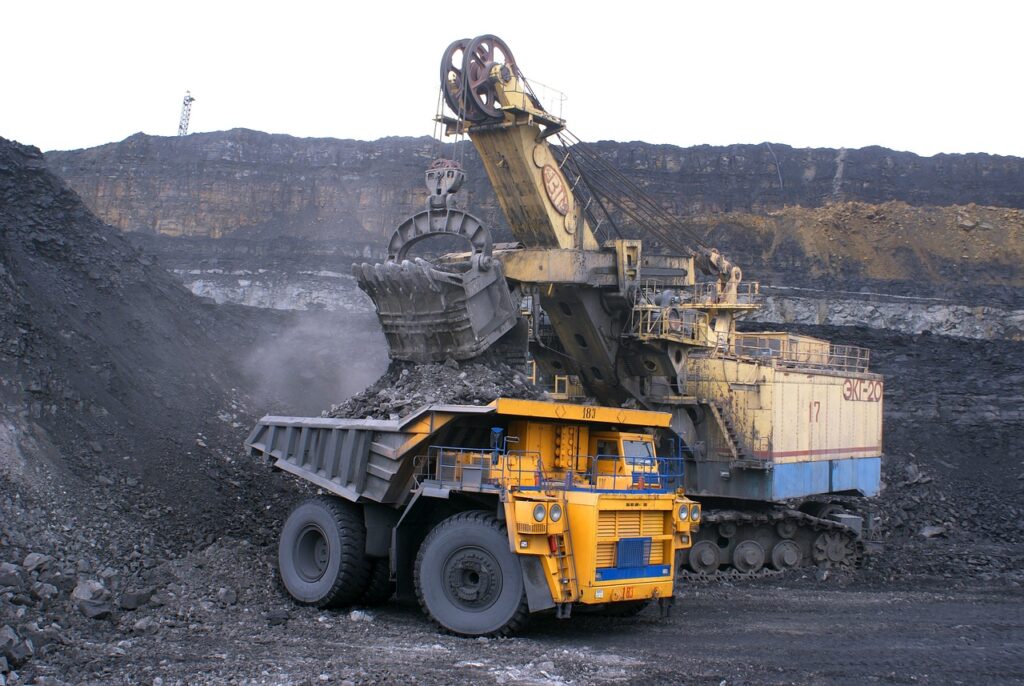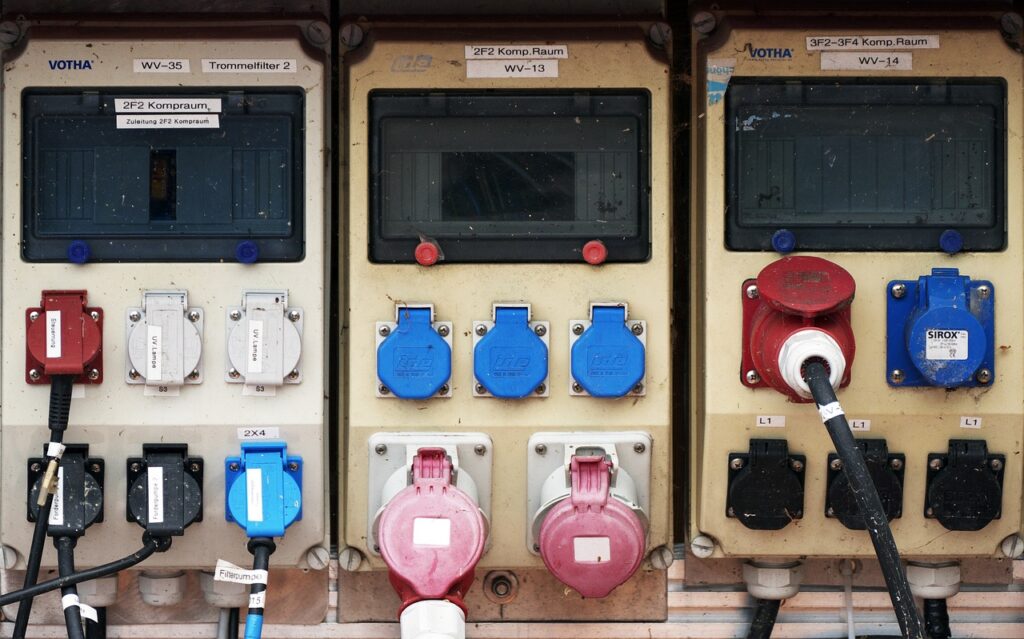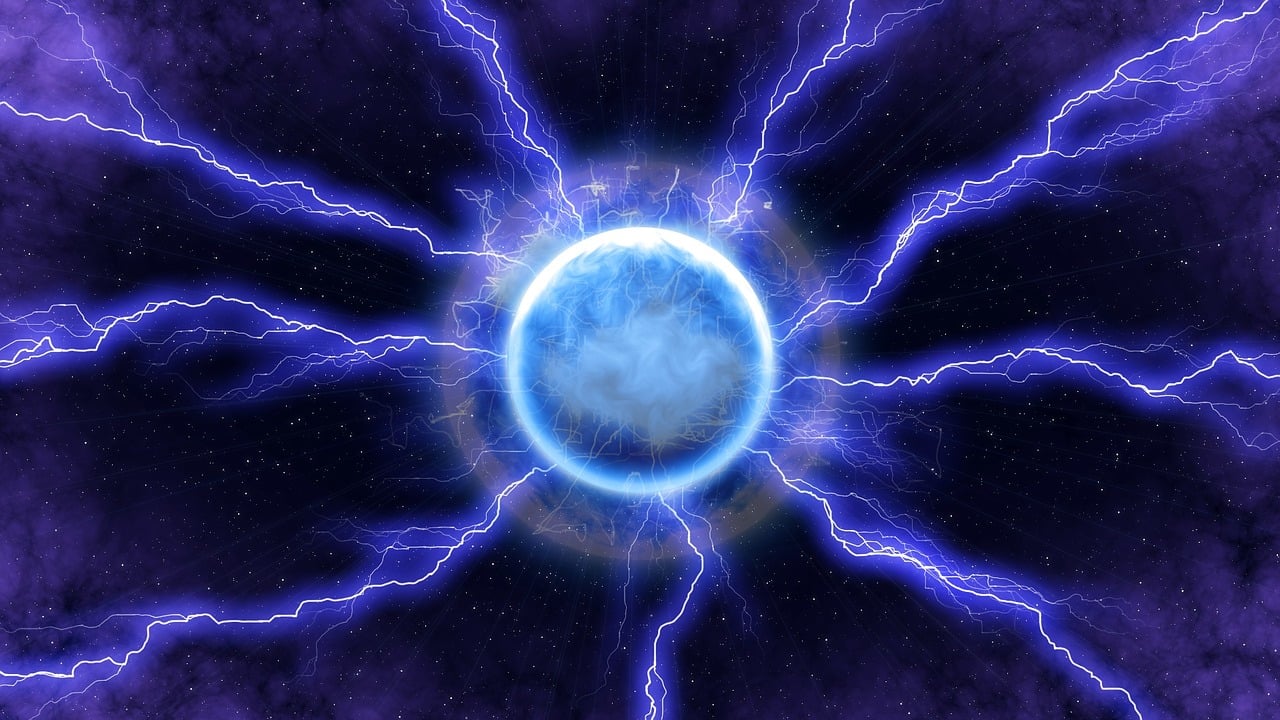Harnessing the Power of Transferring Energy
In the vast realm of physics and our daily lives, the concept of “transferring energy” stands as a cornerstone. It’s a phenomenon that governs everything from the warmth of our homes to the functioning of our gadgets. But what exactly is transferring energy? How does it work, and why is it so crucial? This article about Transferring Energy aims to shed light on these questions, guiding readers through the intricate dance of energy as it moves, changes, and shapes our world.
Understanding the Basics of Energy Transfer
The Different Ways Energy Transfers:
- Electromagnetic Waves: One of the primary methods of transferring energy. These waves, which include visible light and infrared radiation, carry energy through the vacuum of space.
- Heat Energy: This is the transfer of energy due to a temperature difference. In fact, it can occur through conduction (like a metal spoon heating up in a hot soup), convection currents (hot air rising), or radiation (thermal radiation from the sun).
- Chemical Energy: Stored in the bonds of molecules, this form of energy is released during chemical reactions, such as when wood burns or food digests.
- Gravitational Potential Energy: Energy stored due to an object’s position in a gravitational field. For instance, a stationary golf ball on a hill has gravitational energy.
- Electrical Energy: Generated by electric circuits and electric fields, this energy powers our homes and devices.
The Conservation of Energy: A Fundamental Principle
At the heart of understanding energy transfer is the first law of thermodynamics. Also known as the conservation of energy. Indeed, it states that energy cannot be created or destroyed. Only transferred or converted from one form to another. For example, when a moving object (with kinetic energy) hits a stationary golf ball, the kinetic energy of the object is transferred to the ball, making it move.
Examples of Energy Transfers:
- Light Bulbs: Convert electrical energy into light energy and heat energy.
- Electric Motors: Transform electrical energy into mechanical work.
- Laser Beams: Emit radiant energy in the form of light.

FAQs about Transferring Energy
What is the significance of Sankey diagrams in energy systems?
Sankey diagrams visually represent the flow of energy in a system. Showcasing where energy is used efficiently and where it’s lost.
How does the transfer of heat differ from the transfer of kinetic energy?
While heat transfer involves the movement of heat due to temperature gradients, the transfer of kinetic energy relates to the motion of objects.
What is the role of electromagnetic radiation in energy transfer?
Electromagnetic radiation, which includes radio waves and visible light, is a key player in transferring energy, especially over long distances.
Transferring Energy Conclusion (Preview)
Transferring energy is a vast and fascinating topic, touching every aspect of our lives. From the warmth of our homes to the devices we rely on. However, understanding how energy moves and changes is key to harnessing its power for our benefit.
Fact: According to the Next Generation Science Standards (NGSS) for K-12 science education, understanding energy and its transfer is a foundational concept for students, highlighting its importance in both academic and real-world contexts. [Source: NGSS]
The Intricacies of Energy Systems and Their Transfers

Electromagnetic Waves: The Invisible Force
One of the most intriguing aspects of transferring energy is the role of electromagnetic waves. In fact, these waves, spanning from radio waves to visible light, are responsible for a significant portion of the energy transfers we experience daily. For instance, the warmth of sunlight on our skin is due to the transfer of energy from the sun’s electromagnetic radiation.
- Visible Light: A type of electromagnetic wave that our eyes can detect. It plays a crucial role in photosynthesis, where plants convert light energy into chemical energy.
- Infrared Radiation: Often associated with heat, infrared radiation is emitted by all objects based on their temperature. This form of radiant energy is essential in technologies like night-vision goggles and remote controls.
The Dynamics of Heat Transfer
Heat energy, or the transfer of thermal energy, is a phenomenon we encounter daily. Whether it’s the warmth of a cup of coffee or the cool breeze on a winter day, the movement of heat is ever-present.
- Conduction: This is the transfer of heat through solid materials, like a metal spoon becoming hot when immersed in boiling water. It occurs due to the vibration of particles in the material.
- Convection: A mechanism predominant in fluids (liquids and gases), convection involves the movement of heat through the circulation of currents. For instance, hot air rises because it’s less dense, leading to convection currents.
- Radiation: Unlike conduction and convection, radiation doesn’t require a medium. It’s the transfer of heat through electromagnetic waves, such as the sun warming the Earth.
Electrical and Chemical Energy: Powering Our World
Our modern world is heavily reliant on both electrical and chemical energy. From the devices we use to the food we eat, these forms of energy are integral.
- Electrical Energy: Produced by electric circuits and electric fields, this form of energy powers everything from our smartphones to entire cities. In fact,the flow of electric current in a circuit results in the transfer of electrical energy.
- Chemical Energy: Stored within the bonds of molecules, chemical energy is released during reactions. For example, the food we consume contains chemical energy, which our bodies convert into other forms of energy for various functions.
Gravitational Energy: The Pull of the Universe
Every object with mass exerts a gravitational force, and this force results in gravitational potential energy. An apple hanging from a tree, for instance, has gravitational energy due to its position. When it falls, this stored energy is converted into kinetic energy.

FAQs about Energy Systems
How do different temperatures influence energy transfer?
Differences in temperature drive the transfer of heat. Heat naturally flows from warmer objects to cooler ones until equilibrium is reached.
What are some examples of energy transfers in daily life?
Everyday examples include charging a phone (electrical to chemical energy), cooking food (electrical/chemical to heat energy), and even walking (chemical to kinetic energy).
How does the conservation of energy principle apply to energy systems?
The principle ensures that the total energy of a system remains constant. While energy may change forms, its overall amount remains unchanged.
The Role of Transition Words in Understanding Energy
Transition words, such as “however,” “moreover,” and “therefore,” play a pivotal role in guiding readers through complex topics like energy transfer. They provide clarity and structure, ensuring a smooth flow of information.
Fact: The concept of the conservation of energy dates back to the mid-19th century. And was initially applied to mechanical systems. It has since become a fundamental principle in all areas of physics. [Source: Physics Stack Exchange]
Delving Deeper: Advanced Concepts in Energy Transfer
The Role of Internal Energy in Systems
At the microscopic level, every system possesses internal energy due to the motion and interactions of its particles. This energy is a combination of kinetic and potential energy at the atomic or molecular scale. For instance, the internal energy of a gas is related to the rapid movement of its particles. While in solids, it’s associated with the vibrations of atoms within a lattice.
- Temperature and Internal Energy: The temperature of a substance is a measure of its average internal kinetic energy. As temperature rises, the internal energy increases, leading to faster particle movement.
- Phase Changes and Latent Heat: When substances change phase (e.g., from solid to liquid), they either absorb or release energy without changing temperature. This energy is termed latent heat.
Electromagnetic Radiation and Energy Transfer
Electromagnetic radiation, spanning from shorter wavelengths like ultraviolet light to longer ones like radio waves, plays a pivotal role in energy transfer. This radiation can transfer energy without the need for a medium, making it essential for processes like photosynthesis and vision.
- Ultraviolet Radiation: While essential for vitamin D synthesis in our skin, excessive exposure can be harmful.
- Radio Waves: These waves are crucial for communication systems, allowing for the transfer of information over vast distances.
Mechanical Work and Energy Transfer

In the realm of physics, work is a means of transferring energy. When a force acts on an object and moves it, mechanical work is done. Leading to an energy transfer.
- Positive Work: Occurs when the force and direction of movement are in the same direction. For example, lifting a weight off the ground.
- Net Work: The total work done on an object, considering all forces acting on it. It’s directly related to the change in kinetic energy of the object.
The Marvel of Electric Fields and Charges
Electric fields surround electric charges and play a crucial role in transferring energy, especially in electric circuits.
- Point Charges: These are idealized charges that have no size. But possess a specific amount of charge. The electric field they produce is essential for understanding basic electrostatic interactions.
- Potential Difference: Often referred to as voltage, it’s the driving force in electric circuits, pushing electric current through components and leading to energy transfers.
FAQs about Advanced Energy Concepts
How does an electric field contribute to energy transfer?
Electric fields exert forces on charges, causing them to move. This movement, especially in circuits, results in the transfer of electrical energy.
What is the significance of latent heat in energy systems?
Latent heat is vital for understanding processes like boiling and melting. It represents the energy absorbed or released during phase changes without a temperature change.
How do electromagnetic waves transfer energy across vacuums?
Unlike mechanical waves, electromagnetic waves don’t require a medium. They can transfer energy through vacuums, as seen with sunlight traveling through space to reach Earth.
The Importance of Energy Sources and Their Conservation

Our modern world is heavily reliant on various energy sources, from fossil fuels to renewables. Understanding the flow of energy from these sources and the importance of conserving it is paramount.
- Renewable vs. Non-renewable: While fossil fuels like coal and oil have powered our world for decades, their finite nature and environmental impact have shifted focus towards renewable sources like solar and wind.
- Conservation of Energy: Beyond the physical principle, conserving energy in our daily lives reduces environmental impact, saves costs, and ensures a sustainable future.
Transferring Energy Fact: Solar panels, a renewable energy source, convert sunlight directly into electricity using semiconductor materials. Their efficiency and cost-effectiveness have improved significantly over the years. [Source: Stack Exchange Network]
The Multifaceted World of Energy Transfer Mechanisms
Convection Currents: The Natural Flow of Energy
Convection currents are a fascinating phenomenon, predominantly observed in fluids. These currents are formed due to the differential heating of a fluid. Leading to variations in density and the subsequent movement of fluid particles.
- Earth’s Mantle and Tectonic Plates: One of the most significant examples of convection currents is in the Earth’s mantle. The heat from the core causes the molten rock in the mantle to rise, cool, and then sink, driving the movement of tectonic plates.
- Weather Patterns: Convection currents in the atmosphere, driven by the sun’s heat, lead to the formation of winds, clouds, and various weather patterns.
Radiant Energy: More Than Meets the Eye
Radiant energy, often associated with electromagnetic radiation, is a form of energy that can travel through the vacuum of space. It encompasses a range of wavelengths, from gamma rays to radio waves.
- Solar Energy: The sun emits a vast amount of radiant energy, which powers solar panels, drives weather systems, and supports life on Earth.
- Medical Applications: Radiant energy, especially in the form of X-rays, is crucial for medical imaging, allowing doctors to view the inside of the human body.
The Intricate Dance of Mass and Energy Transfer
In many systems, the transfer of energy is closely linked to the transfer of mass. This interplay is evident in processes like combustion, where fuel burns, releasing energy and reducing mass.
- Nuclear Reactions: Perhaps the most famous equation, E=mc^2, highlights the relationship between energy and mass. In nuclear reactions, tiny amounts of mass are converted into vast amounts of energy.
- Chemical Reactions: In reactions like photosynthesis, carbon dioxide and water are converted into glucose and oxygen. Transferring energy in the process.
Sankey Diagrams: Visualizing Energy Flow
Sankey diagrams are a powerful tool for visualizing the distribution and conservation of energy in a system. With arrows representing energy flow, these diagrams showcase where energy is utilized efficiently and where it’s lost.
- Industrial Processes: Sankey diagrams are often used in industries. To optimize processes, ensuring maximum energy efficiency.
- Educational Purposes: These diagrams are also a staple in academic settings, helping students grasp the intricacies of energy transfer and conservation.
FAQs about Energy Transfer Mechanisms (Transferring Energy)

How do infrared radiation and visible light differ in energy transfer?
While both are forms of electromagnetic radiation, infrared radiation is primarily associated with heat transfer, whereas visible light is what our eyes can detect and plays roles in processes like photosynthesis.
What role does gravitational potential energy play in energy systems?
Gravitational potential energy is the energy stored due to an object’s position in a gravitational field. It’s crucial for understanding phenomena like waterfalls. Where water’s potential energy is converted to kinetic energy as it falls.
Why are Sankey diagrams important in energy studies?
Sankey diagrams provide a clear visual representation of energy flow, making it easier to identify inefficiencies and optimize systems for better energy conservation.
The Ethical Implications of Energy Use
As we harness various forms of energy, it’s essential to consider the ethical implications. Furthermore, from the environmental impact of fossil fuels to the equitable distribution of resources, energy use is intertwined with societal values and responsibilities.
- Sustainable Practices: Embracing renewable energy sources and reducing waste ensures a healthier planet for future generations.
- Equity and Access: Ensuring that all communities have access to reliable and affordable energy is a cornerstone of social justice.
Fact: Notably wind energy, another renewable source, has seen exponential growth over the past two decades. Modern wind turbines can generate enough electricity to power 600 U.S. homes. [Source: U.S. Department of Energy]
The Interplay of Energy and Modern Technology

Electrical Energy: The Lifeline of Modern Civilization
In today’s technologically driven world, electrical energy stands as the backbone of our daily operations. From powering homes and industries to charging our devices, the transfer of electrical energy is omnipresent.
- Electric Circuits: These are pathways that allow electric current to flow, facilitating the transfer of electrical energy. Equally, components like resistors, capacitors, and transistors play crucial roles in controlling and directing this energy.
- Electric Motors and Generators: While motors convert electrical energy into mechanical work (like turning the wheels of an electric car), generators do the opposite, converting mechanical energy into electricity.
Thermal Radiation: The Subtle Powerhouse
Thermal radiation, a type of electromagnetic radiation, is emitted by all objects based on their temperature. It’s a primary method of heat transfer, especially in vacuums.
- Space Exploration: In the vacuum of space, thermal radiation is the main method of heat transfer. Spacecraft are designed with this in mind. Using special materials to reflect or absorb radiation as needed.
- Home Insulation: The principles of thermal radiation are also applied in home insulation. Materials that reflect thermal radiation are used to keep homes warm in winter and cool in summer.
The Marvel of Energy Storage and Release
Storing energy efficiently and releasing it when needed is a challenge that has driven technological advancements.
- Batteries: These devices store chemical energy and release it as electrical energy. From tiny watch batteries to massive industrial ones, they power a vast array of devices.
- Hydroelectric Dams: By storing water at height, these structures store gravitational potential energy. When the water is released, this energy is converted to kinetic. And then electrical energy.
The Physics of Sound Waves and Energy Transfer
Sound waves, though often overlooked, are a fundamental method of energy transfer. They are mechanical waves that transfer energy through the vibration of particles in a medium.
- Communication: Our primary method of verbal communication is through sound waves. As we speak, our vocal cords vibrate, producing sound waves that travel through the air.
- Medical Imaging: Ultrasound, a technology that uses high-frequency sound waves, allows for imaging inside the human body without harmful radiation.
FAQs about Modern Energy and Technology
How do solar panels convert sunlight into electricity?
Solar panels use semiconductor materials to absorb photons from sunlight. This absorption releases electrons, creating an electric current and thus transferring energy from sunlight to electricity.
What are the challenges of storing renewable energy?
While renewable energy sources like wind and solar are intermittent. Storage solutions like batteries and pumped hydro storage are being developed to ensure a consistent energy supply.
How do electric cars utilize energy transfer?
Electric cars store electrical energy in batteries. When the car is in operation, this energy is converted into mechanical energy. By electric motors, driving the wheels.
The Future of Energy: A Glimpse into Tomorrow
As we look ahead, the landscape of energy transfer is set to undergo revolutionary changes. With the challenges of climate change and the depletion of non-renewable resources, the focus is shifting towards sustainable and efficient energy transfer methods.
- Fusion Energy: Touted as the energy of the future, fusion aims to replicate the processes of the sun on Earth, offering a near-limitless supply of energy.
- Smart Grids: These are electricity networks that use digital technology to better manage and distribute energy, ensuring efficiency and reducing waste.
Transferring Energy Fact: Tidal energy, derived from the gravitational interactions between the Earth and the Moon, is emerging as a promising renewable energy source. Tidal power stations harness the energy of moving water to generate electricity. [Source: International Renewable Energy Agency]
Hopefully, you have found this article about Transferring Energy enlightening, if so please take a second to share it. Thank you.
Recent Posts
Understanding Energy and Electricity: The Power For Progress
Energy and Electricity Energy and electricity are integral components of modern life, powering everything from homes and businesses to transportation and communication. Without them, the...
The Future of Wind Energy The future of wind energy is set to play a critical role in addressing global energy needs while combating climate change. As renewable energy sources like wind and...


